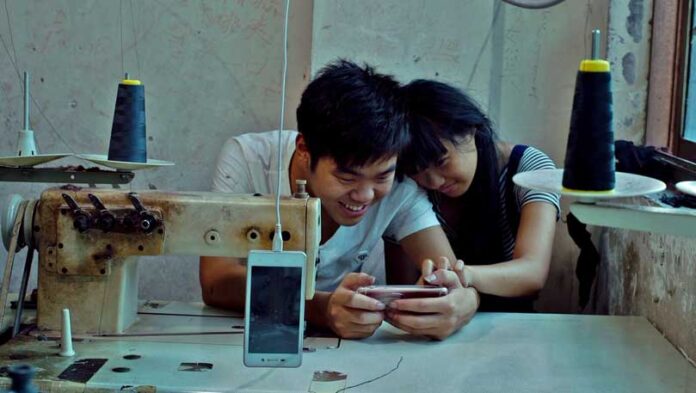[ad_1]

The Moviegoer is the diary of a local film buff, collecting the best of what Chicago’s independent and underground film scene has to offer.
There is perhaps no other filmmaker working right now who’s chronicling labor—and, in the process, critiquing the machinations of late-stage capitalism—like Wang Bing. The Chinese documentarian’s first film, Tie Xi Qu: West of the Tracks (2002), is a nine-hour study of Shenyang’s Tiexi district and its decline from the heyday of the country’s socialist economy, conveying that downturn vis-à-vis the workers, the families, and tertiary figures affected by the factory closures.
Following this monumental first film (which I had the pleasure of seeing in New York several years ago, a durational achievement of which I’m particularly proud), Wang has focused primarily on similar subjects as well as the legacy of Maoist China. The former concern is the bent of his recent Youth trilogy, the latter two of which, Youth (Hard Times) (2024) and Youth (Homecoming) (2024), began screening at Gene Siskel Film Center this past weekend, with Wang in attendance for Q&As following screenings of Youth (Homecoming).

The first film in the trilogy is Youth (Spring), which came out last year. All shot over the course of five years prepandemic, each film follows young people working as garment workers in Zhili, known as the “city of children’s clothing” for being the country’s main production area for kids’ clothing. Youth (Spring) is a more general overview of the lives of the young workers, while Youth (Hard Times) and Youth (Homecoming) assume more specific narratives, the former around workers’ issues with their employers and the latter around the workers, primarily emigrants from more rural provinces, as they return home and progress in their personal lives.
I watched both of the films at home in advance of writing about Youth (Homecoming) for Cine-File and having the incredible opportunity to interview Wang on Friday. The dominant image of all these films is that of the worker, hunched over their sewing machine, the ache and monotony of their labor aptly captured via the 20-minute sequences with which Wang composes these films. I’d say that for most of us in the west, the idea of such exploited labor is abstract—we know it exists, and a decent amount try to offset this ghoulish reality where possible, but it’s still difficult to imagine, to put faces and personalities to such distanced abstraction. Empathy might only get a person so far. Through studied observation and fearless prolongation, Wang’s films document this reality in such a way that makes it real, rather than just reality consolidated for a condensed viewing experience.
Also, over the Thanksgiving break, I tried to catch up on some films I hadn’t been able to see in the theater earlier this year, one of which was Stephen Maing and Brett Story’s Union (2024), fitting viewing following my time spent with the Wang films. Maing and Story’s documentary follows the creation of the Amazon Labor Union, led by Chris Smalls. It’s a true David-and-Goliath story about the so-called “little guy,” in this case the workers, prevailing over the monster tech company with a historic win in founding the first Amazon union to be recognized by the National Labor Relations Board. It was also appropriate considering the holiday in question; it certainly made me recommit to my ongoing resolution to stop using Amazon, a film again helping to bring to life an abstraction that unfortunately can be easy to ignore in the face of convenience.
I watched quite a bit at home, but I did catch Brian De Palma’s Phantom of the Paradise (1974) at the Music Box Theatre on an absolutely gorgeous 35-millimeter print. Turns out split screens and campy Faust adaptations provide quite the palate cleanser, though one shouldn’t feel comfortable for too long.
Until next time, moviegoers.
[ad_2]
Source link






